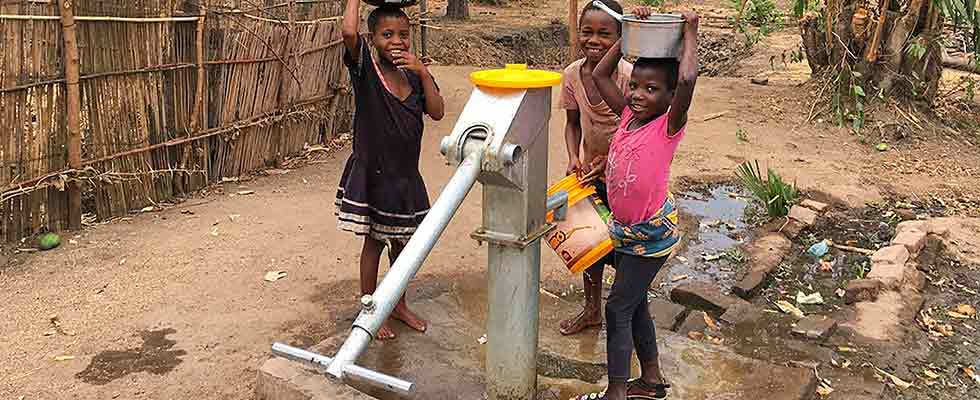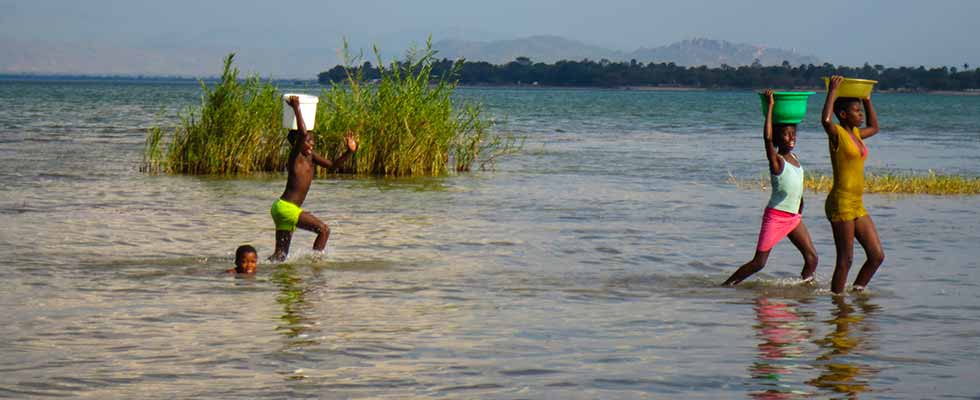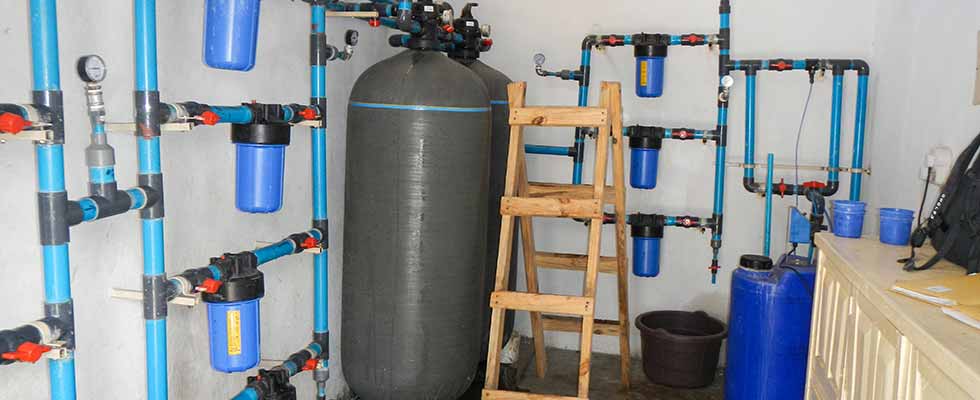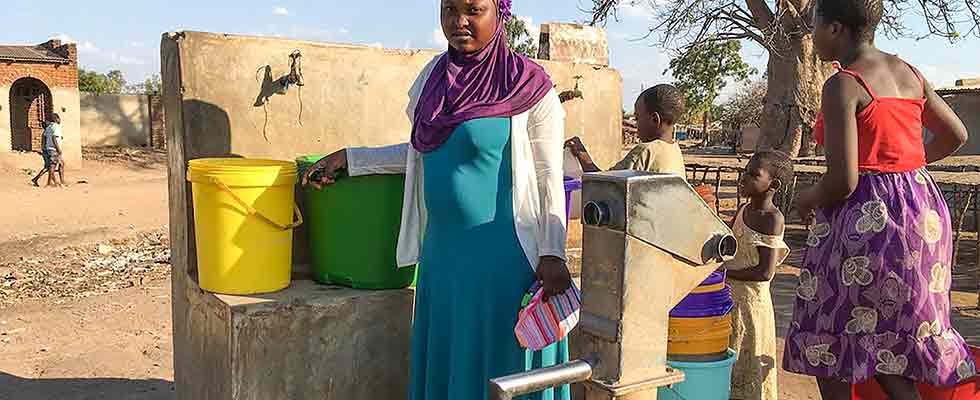
It is often hard to communicate how essential water is. Three days without water means death for most people, and yet for most, water is not treated as a precious commodity. It is easy to become accustomed to opening a tap and expecting clean water to come out, paying pennies on the dollar per gallon, rarely concerning ourselves with how that water is cleaned or supplied.
Even in this modern era where cars drive themselves, basic access to clean water is still a nearly insurmountable obstacle for an estimated 35 percent of the global population.1 However, there is hope through a shared wealth of engineering knowledge to adapt, and hopefully thrive, within these unique project constraints. Whether in Africa or Houston, clean water or chemical transport, hydraulic design brings a lot of the same solutions to a lot of the same problems.

Malawi Children’s Village
This success story begins in the Mangochi district of Malawi, an area at the base of Lake Malawi in the southeast of Africa. A landlocked country, Malawi ranks among the world’s most densely populated and least developed countries.2 More than 65 percent of the population live on less than $2 per day, and infectious diseases such as malaria and HIV/AIDS are common.2
While these circumstances can be challenging for adults, it can be nearly insurmountable for the more than 2,000 orphans in the Mangochi district to live independent, healthy lives.3
Though life is often a struggle in Malawi, a bright spot is the Malawi Children’s Village (MCV), a nonprofit organization seeking to enhance the lives of orphans in the 39 villages along the southwest shore of Lake Malawi. The organization provides health, social and educational resources for orphans from birth to adulthood.
One issue that plagued MCV and villages in the area was poor access to drinking water. In the past, MCV relied on untreated water from Lake Malawi. The country’s underdeveloped infrastructure makes it difficult to supply clean drinking to the MCV’s 500 infants, students and volunteers, especially for an organization without an engineering background.
The MCV water treatment project was taken on by the Southcentral Alaska Professional Chapter of Engineers Without Borders, now called Alaska Professional Chapter (EWB-APC), working in conjunction with local and international organizations. EWB-APC is a professional chapter that operates under Engineers Without Borders USA [EWB-USA].
The group began its project assessment in 2008, with final construction and training locally in 2012. The project scope included the design of a suction lift pump setting near the lakeshore, moving water through a 2,700-foot line to the treatment building, and then filtering and treating the water. After being treated, the water is stored in a tank 15 feet off the ground, constructed on-site, and then distributed to the school and orphanage.
While the initial project scope for MCV has been completed, EWB-APC continues to work in the Mangochi district with other local partners to help expand access to clean drinking water to more residents in the surrounding areas. It is valuable to examine this project to see its similarities and challenges for general hydraulic design.

Confronting the Challenges of Hydraulic Design
Like many engineering problems, looking at this project can be paralyzing, especially when faced with the additional challenges and hurdles of operating in a developing nation. But, like many engineering problems, taking a precise and calculated approach sorts out many of the same issues as any other hydraulic design.
For one, all hydraulic designs need to operate within an initial budget, keep operating costs low, and most importantly, be safe and reliable in a variety of operating conditions. This is all in addition to engineering a design that meets client demand. Thus, regardless of location and economic circumstance, a primary project consideration is fluid dynamics.
Whether in a multibillion-dollar facility in the United States or a pump station in Malawi, there are only a handful of ways to move fluid consistently. Accounting for different supply conditions, evaluating pump configurations, and ensuring the design factor is not so large that the project is bled dry, are all concerns regardless of global circumstance. Testing these variations for a billion-dollar facility with hand-calculations or a spreadsheet is one level of financial risk. If there is an error and a pump breaks on the job, it cuts into profitability. But at the end of the day, most of the consequences are financial.
Relying on a spreadsheet when that financial safety net shrinks to the size of a napkin and the consequence of a mistake is leaving children without clean drinking water, the analysis tools become more critical. While design considerations in engineering are often concerned with maximizing profitability, this project was one in which the bottom line was not the bottom line.
Working in Malawi has its own challenges for EWB-APC’s engineers, such as distance, time and resources. For those unfamiliar with global geography, Malawi and Alaska are not exactly neighbors. With more than 9,000 miles separating the two locations, there are hurdles to ensuring that designs are executed to specifications. The project requires occasional travel by chapter members, but through the internet and contacts in-country, the amount of travel is minimized.
Also, many of these engineering volunteers maintain a career outside of their EWB Malawi partnership work, requiring time off from their primary employer to ensure projects progress as intended. Since work on these projects occurs during free time and is pro bono, chapter team members must balance their career, personal and volunteer obligations.

Finally, existing infrastructure is lacking and construction techniques are often rudimentary in Malawi. For example, one step during construction was to bury 2,700 feet of 1 1/2-inch transfer line with hand tools.
After successfully implementing the system, servicing one of the pumps in the pumping station revealed clams were being transported into the feed pump and degrading performance. While problematic species like clams may not plague all hydraulic systems, one issue that can surprise any hydraulic analysis is relying on unreliable optimistic vendor predictions for pressure drop. Problems like this show that a model is only as reliable as its input.
The lesson from the Malawi Children’s Village project is that applying an engineering mindset to any kind of problem reveals many similarities in the process. Even if the stakes are not as high as providing drinking water for hundreds of people, it is essential to take all sorts of design considerations into account.
And, the biggest takeaway is to never take water, especially clean water, for granted.
References
1. www.cdc.gov/healthywater/global/wash_statistics.html
2. CIA Factbook 2017
3. www.malawichildrensvillage.org

